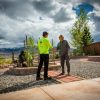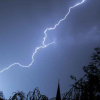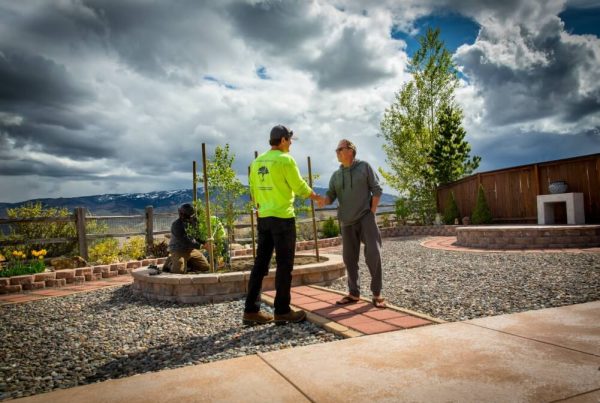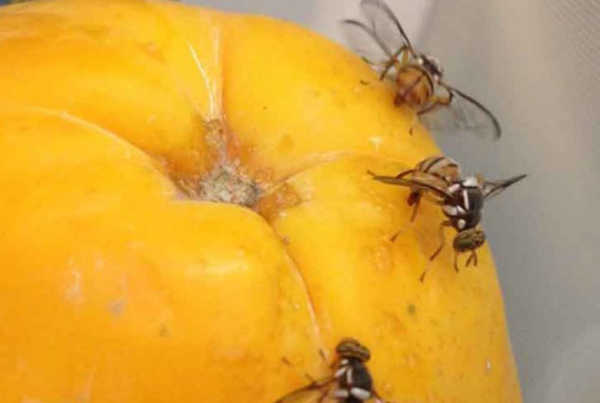
When a tree is hit by lightning it can be serious and hazardous. This article will help you understand why trees are lightning targets, what the damage looks like and what to do.
Why Trees are Hit by Lightning
Have you ever wondered why trees seem to be lightning magnets? It’s all about their height and physical shape. As they are the tallest feature in the area, they are natural lightning rods. With their height and moisture content they are the perfect conduit for electrical currents during thunderstorms.
Some trees are more prone to being hit by lightning than others. Pines and oaks are more likely because of their high resin and starch content making them conductive. Tall trees with deep roots are more targeted because the roots provide a clear path for the electricity to discharge into the earth. Trees with decaying roots or trunks are more hazardous because the decay traps more moisture making them more conductive.
Like other tall trees standing alone in open spaces or near water they are more likely to be struck by lightning.
What’s also interesting is how tree bark texture affects the reaction to a lightning strike. Smoother bark can deflect the electric charge better than coarse‐textured bark. This variation affects the pattern of strikes on different species. When bark is soaked by rain, it can become another path for electricity to travel around the tree surface and affect where it hits the tree – all this knowledge helps us when we assess the measures to minimize the impact of the interaction between vegetation and the electrical forces in our atmosphere.
Immediate Effects of a Lightning Strike on a Tree
When a tree is hit by lightning the results can be dramatic and devastating. The temperature of a lightning strike can reach 50,000 degrees Fahrenheit and can cause internal damage to the tree. The heat can turn water inside the tree into steam almost instantly. This rapid expansion can cause the bark to fracture or peel off. This will leave visible scars, cracks on the trunk and charred areas.
After a lightning strike on a tree you may see:
- Stripped bark exposing the wood underneath
- Wood fragments from exploding parts or splintered sections with branches hanging precariously
- In extreme cases where the tree is hit by lightning, it can be complete destruction from internal pressure buildup from the rapidly expanding steam
These immediate physical effects can damage not only the aesthetics but also the structural integrity. of the tree making it a hazard.
After a tree has been hit by lightning, it should receive a thorough examination for issues such as deep-seated splits, exposed wood, and hanging limbs that could fall and cause property damage. A comprehensive assessment is needed to identify any hidden damage traversing through the sapwood channels, very important if you want to prevent more serious problems later on.
Knowing these immediate effects helps us in dealing with the aftermath of a lightning event on trees.
How to Identify Lightning Damage in Trees
It’s important to identify the signs of lightning damage in trees to know the extent of the damage and what to do next. The visible marks of a lightning strike are burnt parts, bark stripped off, long vertical scars and charred areas. Usually visible are the stripes along the tree trunk where the electricity passed through especially on trees that were hit by lightning.
Visible signs often include large branches cracked or split and branches hanging from above. While these outward signs are obvious, it’s equally important to look for the unseen damage beneath the surface. Internal injuries may not show up right away but can critically affect the health and structural integrity of the tree. For example when the sap inside expands rapidly due to a strike and comes out – this is a sign of internal turmoil.
Root damage should also be checked as it can affect not only the tree’s vitality but also its stability. Signs like droopy leaves or declining foliage condition could mean root system problems underneath. Regular inspections after a lightning event are advised so you can catch any hidden problems early on and take action accordingly.
Among the most common tree species that get hit by lightning are oak, gum, maple, poplar, and pine trees.
Tree Health After Lightning Strike
Assessing the condition of a tree after it has been hit by lightning means inspecting the visible damage and checking for possible hidden damage. Trees that have had a lot of bark stripped off are more prone to decay and may need to be taken down if they’re near structures or valuables. Deep splits in the trunk can reveal internal damage caused by the lightning strike.
Keep in mind that signs of trauma may not show up right away. Large trees can start to show symptoms like droopy or discolored leaves several days after the strike. These signs mean underlying problems that affect the tree’s circulation system and its ability to pull up water and nutrients. Disruption in the soil around the roots or changes in foliage condition can mean root damage.
Whether a tree can heal itself depends on its ability to regrow after injury – and this varies among species. Hiring an expert for a tree inspection will give you an assessment on how much damage the tree has sustained from the lightning strike and help you decide on preservation or removal options. Continuous monitoring over time is important to give the affected trees the best chance to recover.
Caring for a Lightning-Struck Tree
After a lightning strike, immediate and continuous care is necessary for the affected tree. First, strengthening the struck tree’s structure to make it stable may be needed. This can include mulching and selective pruning of damaged areas to minimize harm while promoting recovery.
Make sure the lightning-struck tree gets enough water to make up for the lost moisture and support its recovery. Watering with fertilization can speed up healing and new growth but major pruning should be done 2-6 months after the strike to let nature heal first. During this waiting period, only remove dead or broken branches without over-pruning the healthy parts of the tree.
Continuous monitoring of the health of a lightning damaged tree is important to detect hidden problems. It’s especially important to watch out for exposed wounds as they can be magnets for pests and disease. Hiring a tree care professional will give you valuable insights on how to maintain the tree properly after a lightning strike.
When to Call an Arborist After a Lightning Strike
When a tree is struck by lightning, calling an arborist is crucial for management. If the lightning occurs and there’s irreparable damage like big cracks or split trunk in the tree, it may need to be taken down. The unpredictability of damaged trees means only trained professionals should remove them.
If a lightning-struck tree is an immediate threat to nearby buildings or people, emergency tree services should be called. A severely damaged and hazardous tree needs certified arborists who can do thorough evaluations and advise on what to do.
If you’re unsure of the extent of damage to a lightning-struck tree, consult a certified arborist. They know what to look for to determine if recovery efforts will be enough or if the entire tree just needs to be removed for safety. Regular inspections by these professionals can prevent future risks and healthier trees overall.
Preventing Lightning Damage to Trees
To protect trees from lightning strikes, a lightning protection system should be in place. If you own property with trees that are valuable or vulnerable – like tall or historic trees – consult Certified Arborists on how to install these systems.
A typical setup for a lightning protection system consists of a rod, copper cabling and grounding equipment. The installation process involves burying a conductor wire in the soil which connects to an 8-foot deep grounding rod. When installed correctly, this setup diverts the energy from the tree to the ground below and reduces damage risks.
To keep their effectiveness in shielding many trees against lightning strikes, owners should regularly inspect their lightning protection systems and replace damaged parts immediately. These proactive steps will help keep the health and structure of trees in your property intact.
Storm Safety
During electrical storms, safety first. Lightning strikes are deadly. Stay inside. Avoid using devices with cords and appliances that plug into outlets as lightning can travel through the wiring. Instead, use cordless or mobile phones during these times.
If you’re outside and can’t get to shelter, don’t hide under trees as they’re tall and become lightning attractors. Minimize your contact with the ground by crouching down instead of standing up. If a tree near you gets struck by lightning, stay away from it as it may still have electrical charge.
If lightning hits and a fire ignites in a tree, call for emergency help immediately. Follow these guidelines when there’s a storm around to be lightning safe for yourself and your belongings.
FAQs
What tree species is most likely to be struck by lightning?
Oaks are most likely to be struck by lightning (and sometimes die suddenly) because they’re tall and have a broad, dense canopy. They’re more exposed in open areas.
Do trees protect you from lightning?
Trees don’t protect you from lightning and can actually increase your risk of injury during a storm.
If you hear thunder and see storm clouds, the safest place to be is indoors or in a vehicle.
What are the immediate signs of a tree struck by lightning?
After a tree is struck by lightning you may see scarring, deep cracks, split bark, blackened areas and hanging branches.
These are the visible signs to look for to assess the damage.
How can I prevent lightning damage to my trees?
To prevent any more lightning strikes and damage to your trees, install a lightning protection system with a rod, copper cables and grounding system.
This proactive measure will protect your trees from potential lightning strikes.
When do I call a professional arborist for a struck tree?
You should call an arborist if the struck tree is beyond repair, has a deep crack, is a hazard to nearby structures like power lines, or if you’re not sure of its condition.
Once the lightning strikes, the electricity will be diverted to the cable assembly, leaving your tree unscathed.
Contact American Arborists for Trees Struck By Lightning
If you’re wondering about what to do when lightning hits a tree and causes significant damage, you’re in the right place. American Arborists have experience taking care of tree damage such as structural defects, splintered wood, lightning scars, and more.
Knowing the effects of lightning on trees and what to do, is key to minimizing damage and being safe for yourself and your property. It’s everything from recognizing damage quickly to assessing a tree after a strike and providing care for one that’s been struck by lightning. Having preventative measures like installing lightning protection systems and knowing when to call in professional arborists is crucial for your trees’ longevity.
If you’re in Nevada looking for expert help for storm damage or tree maintenance services, American Arborists are here to assist. By using their services, you can keep your trees healthy and your property safe. Be proactive and don’t wait for lightning to strike your trees.











